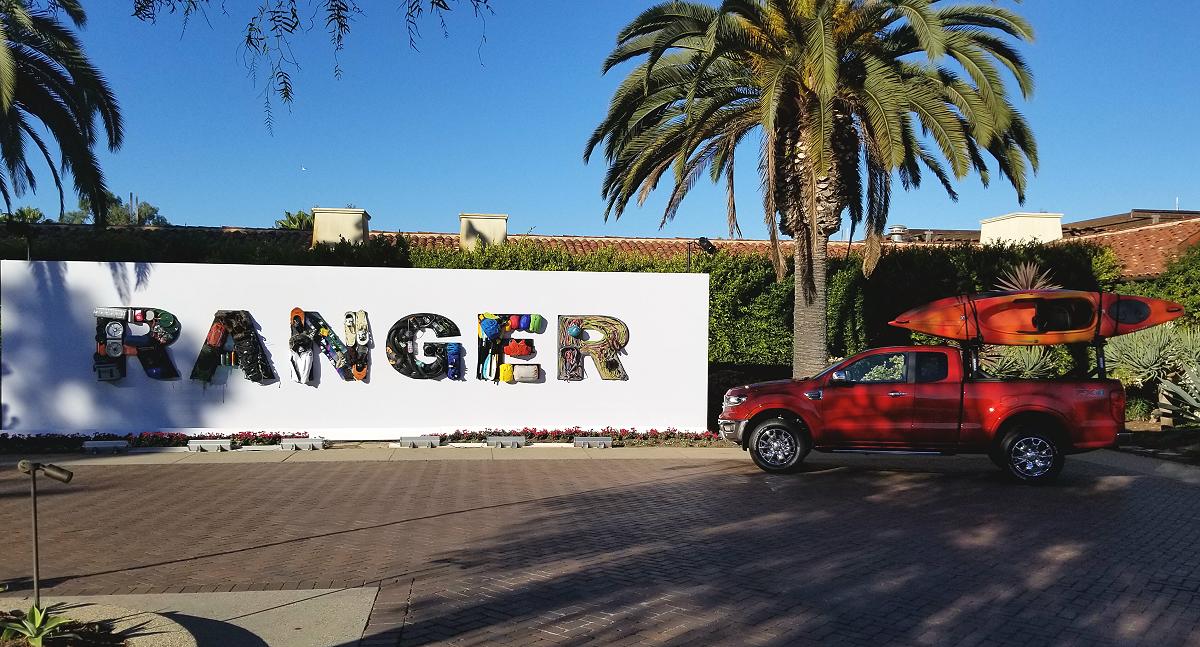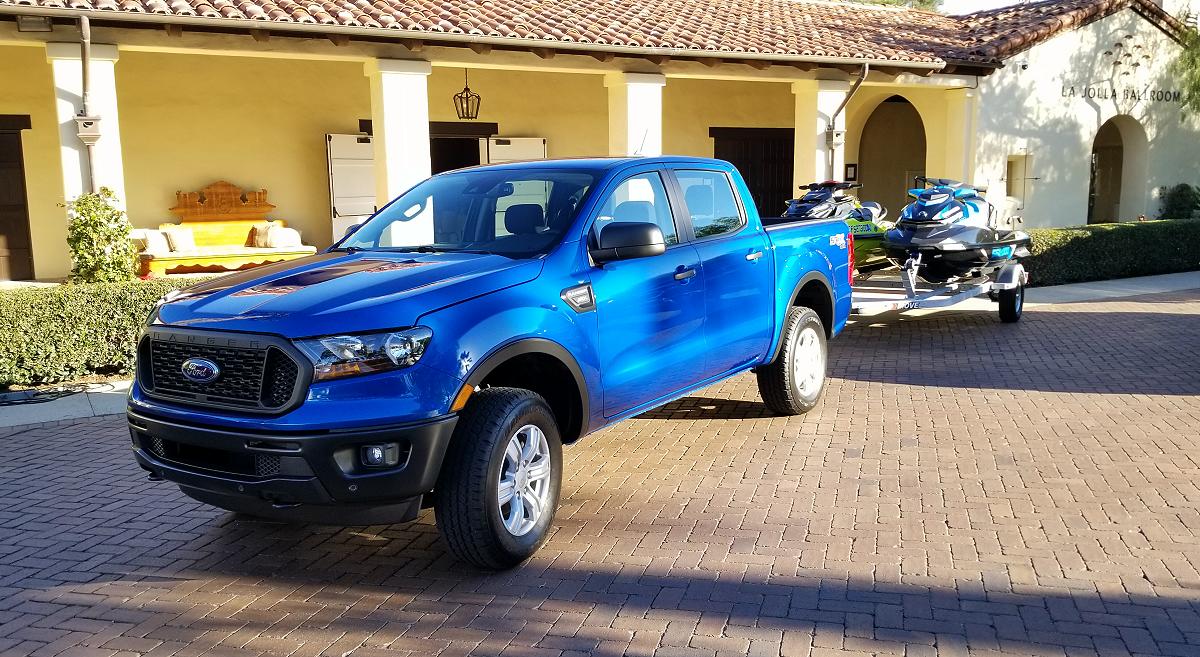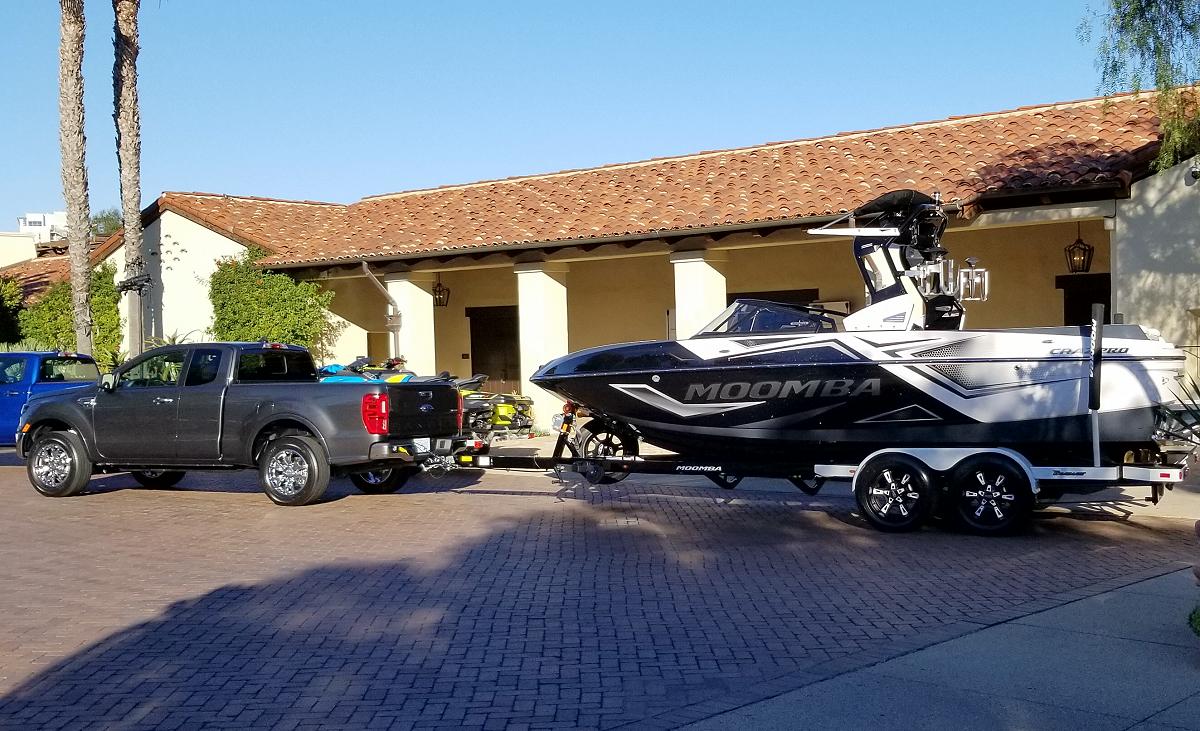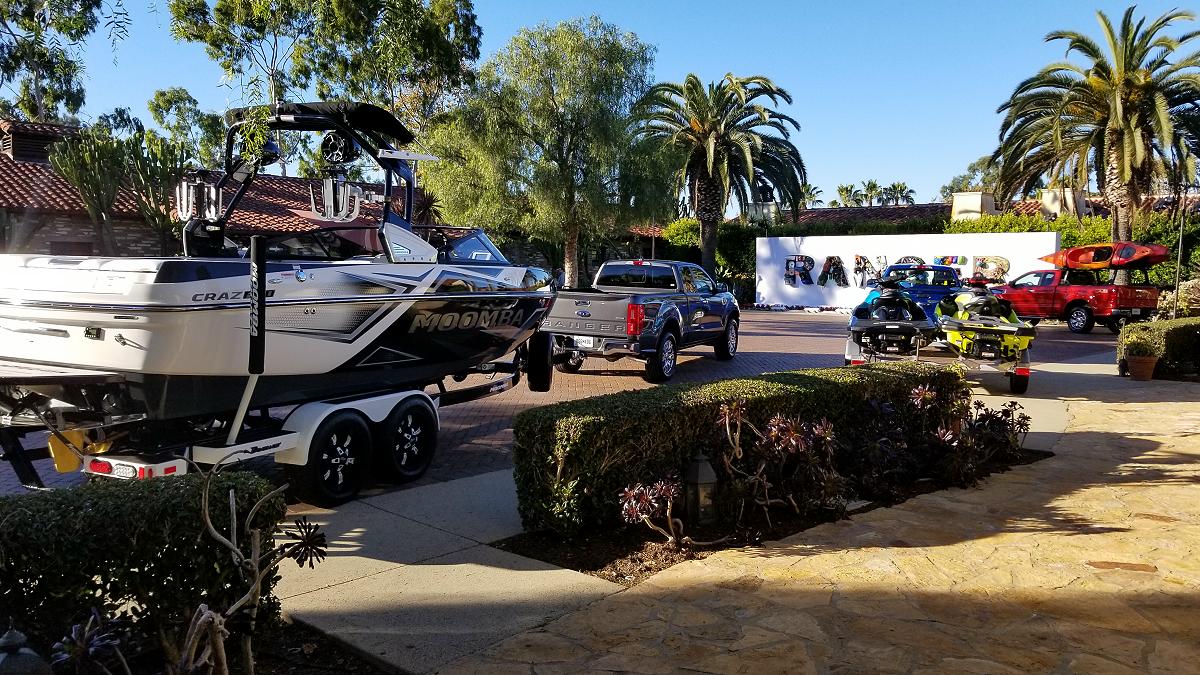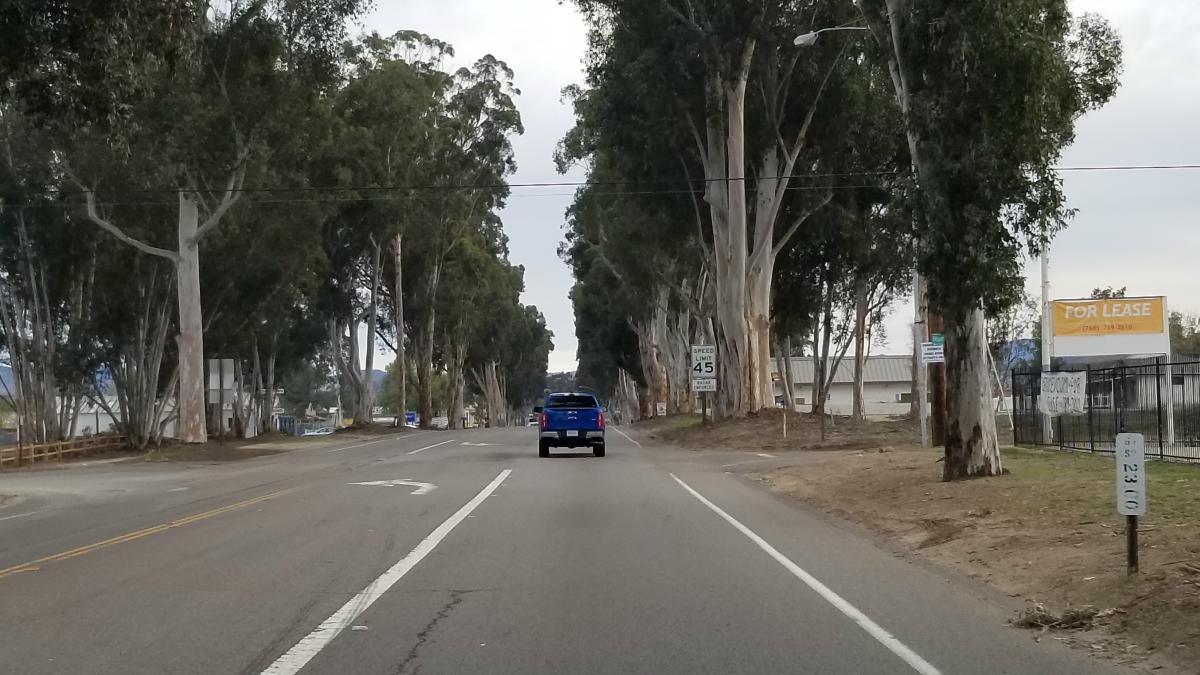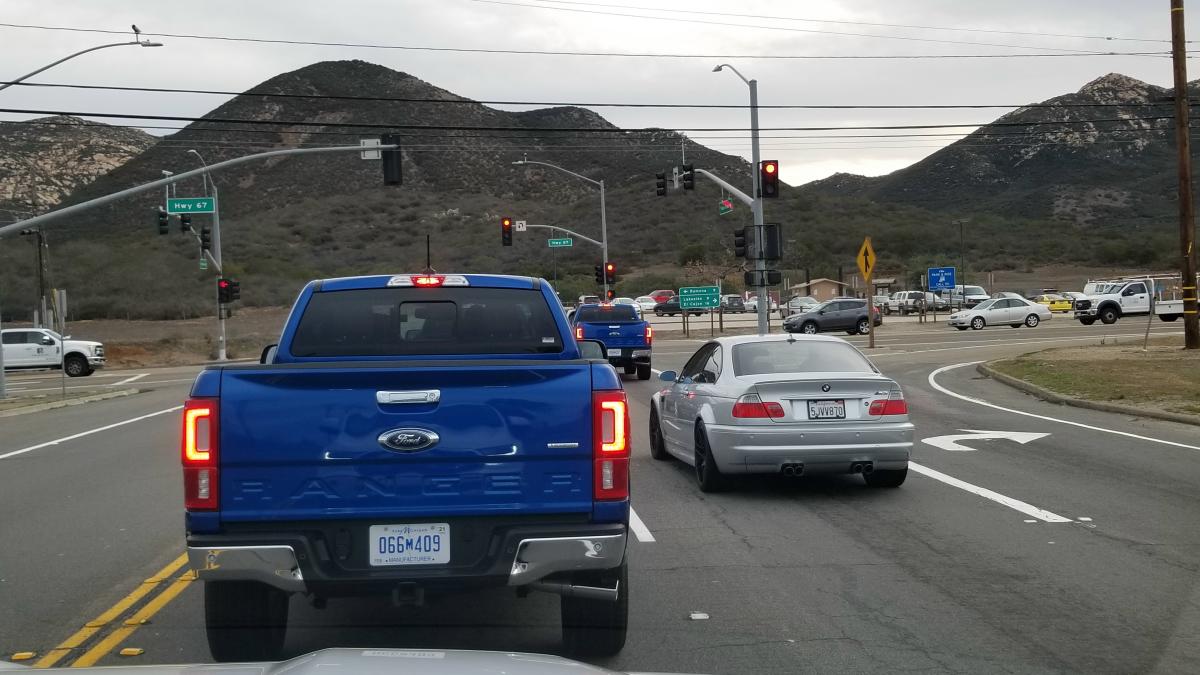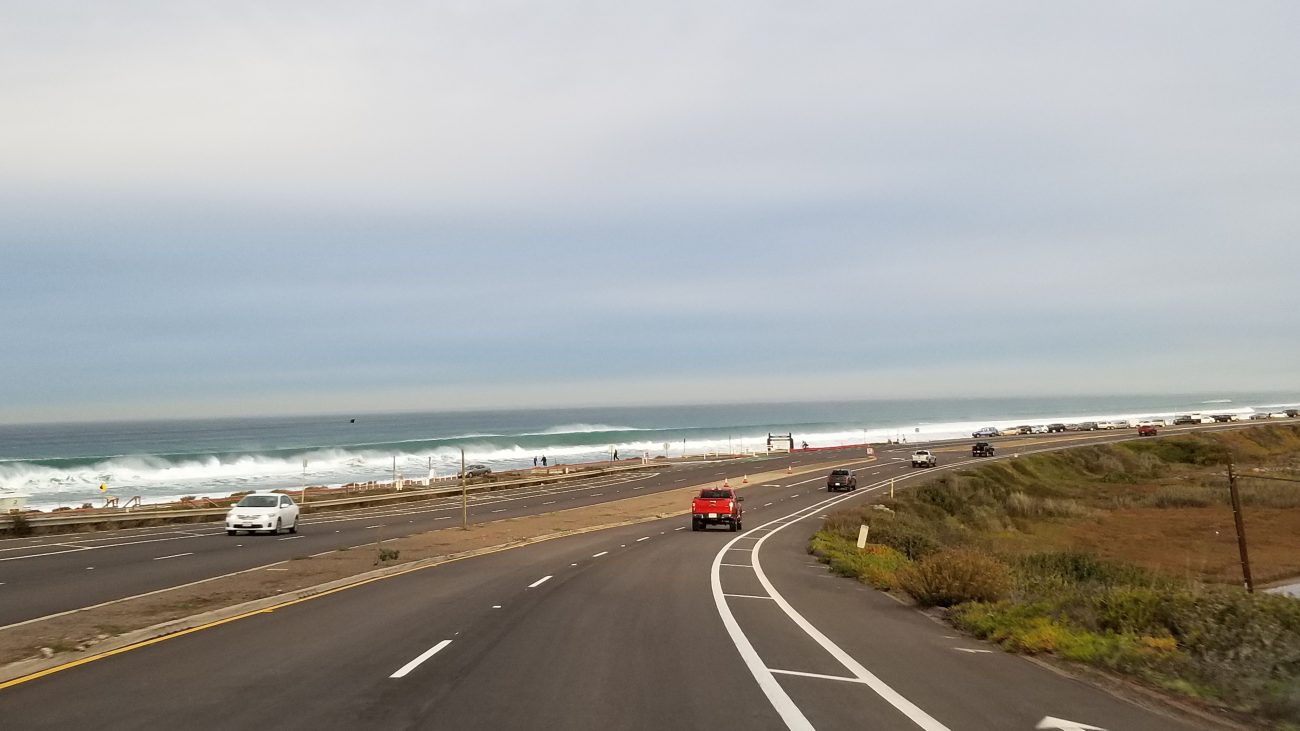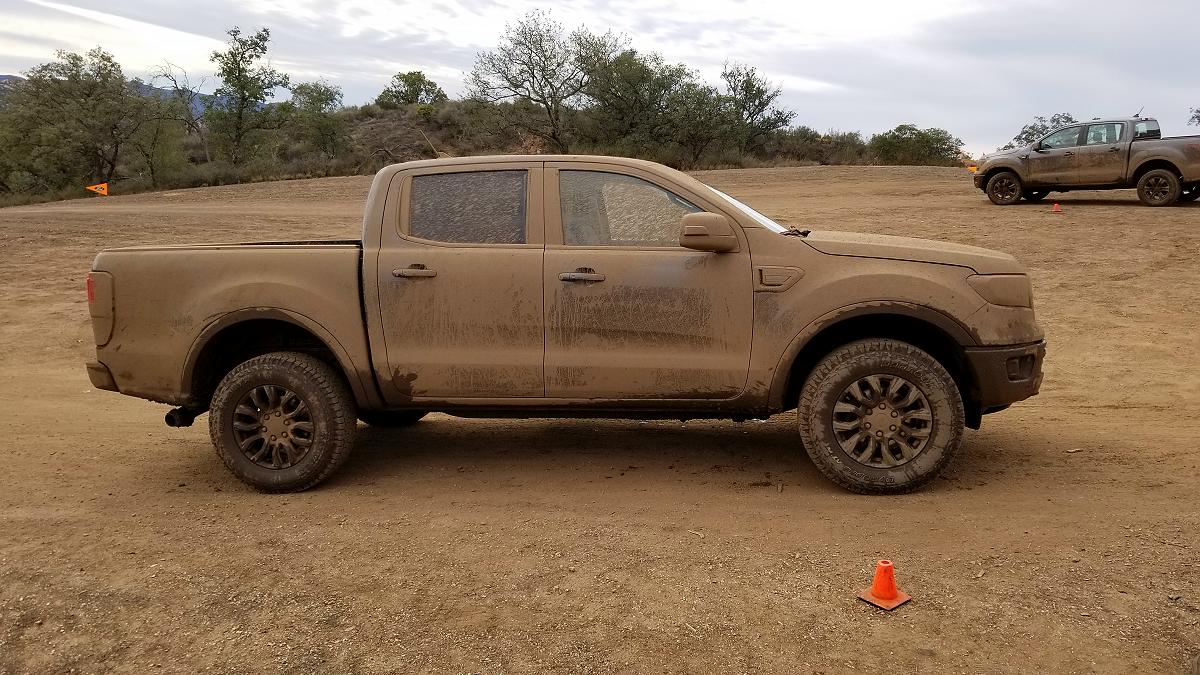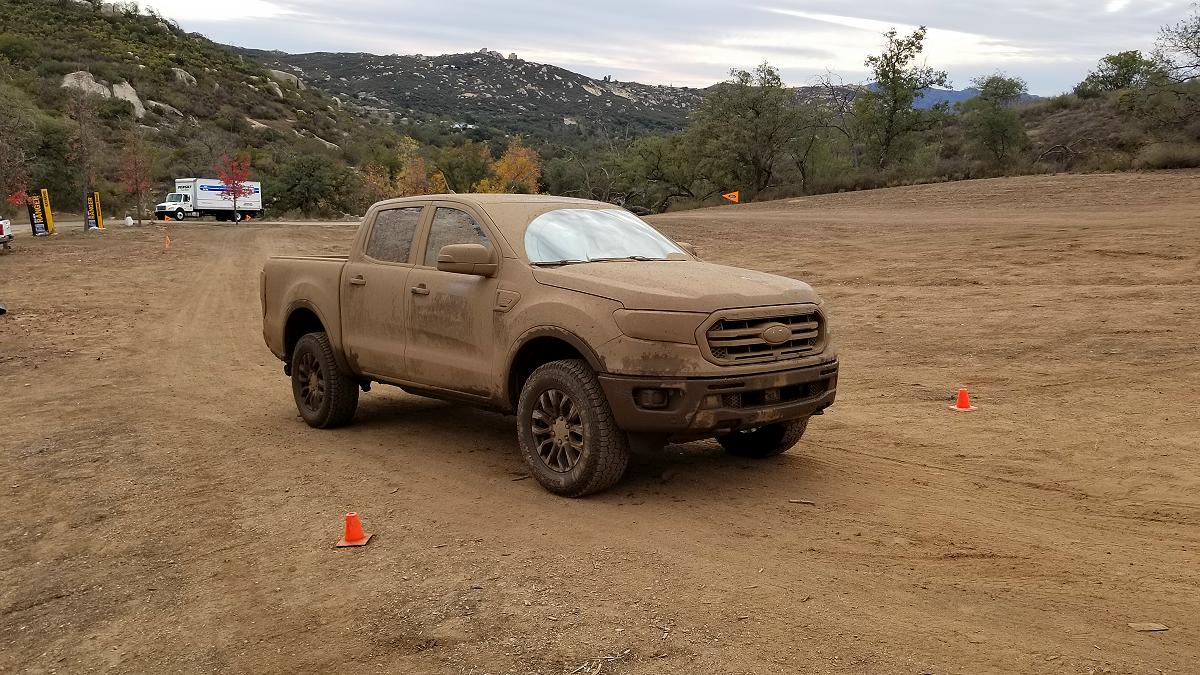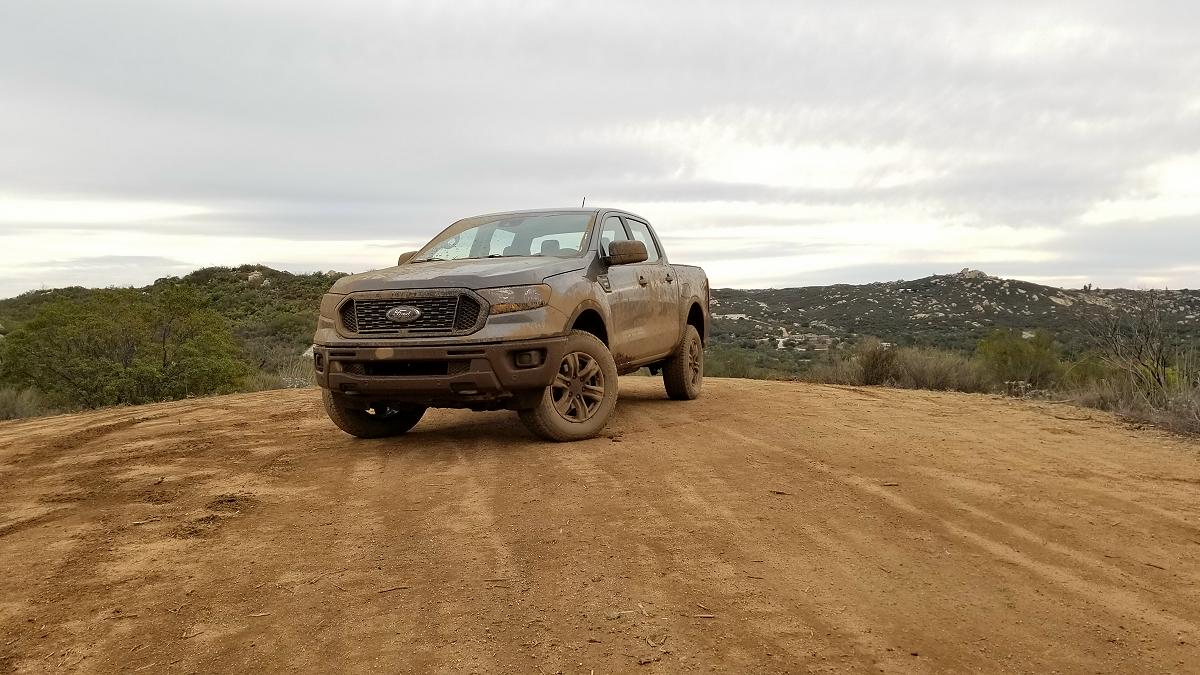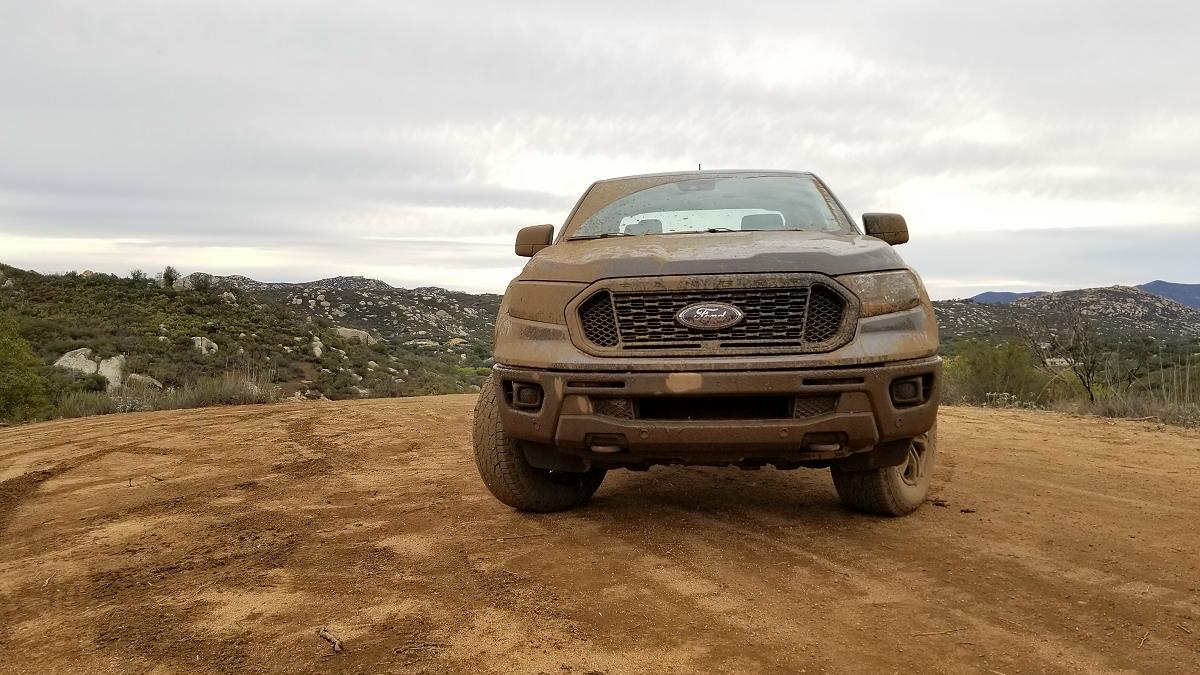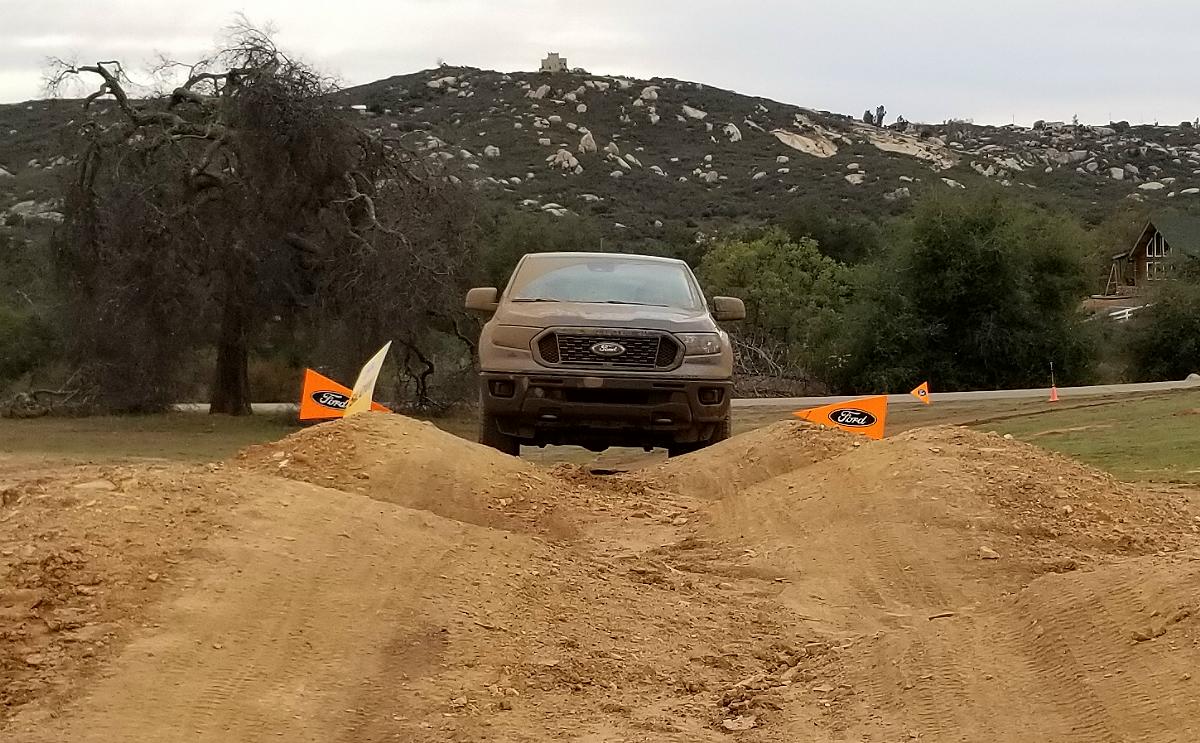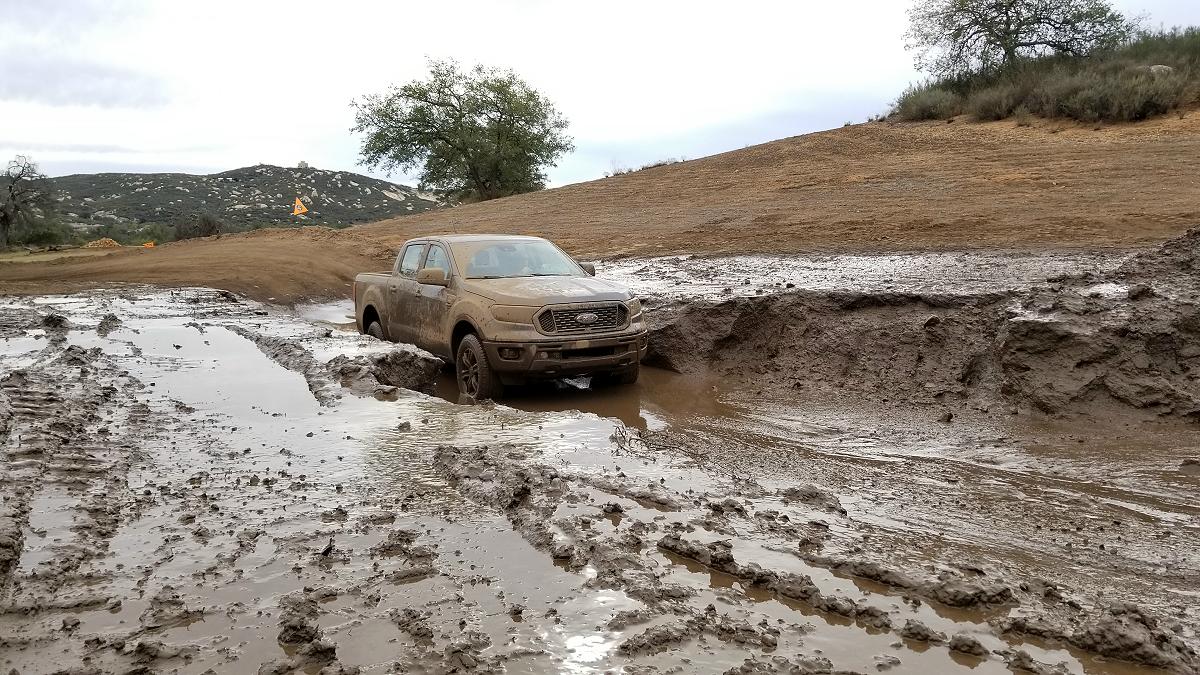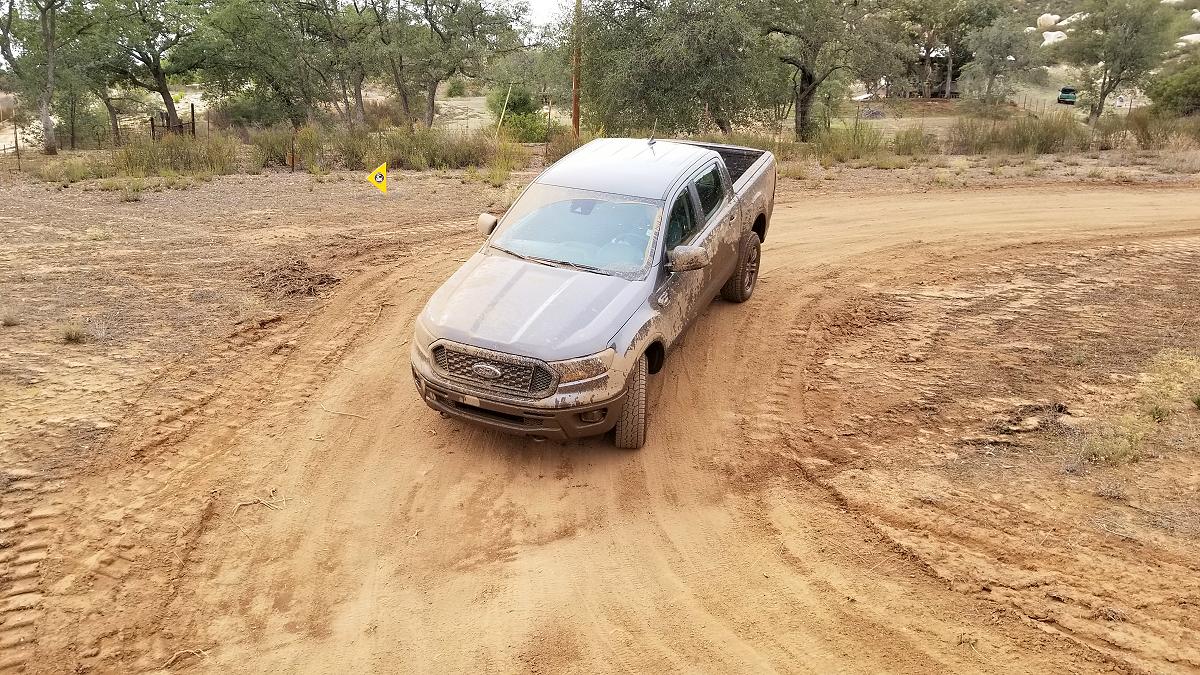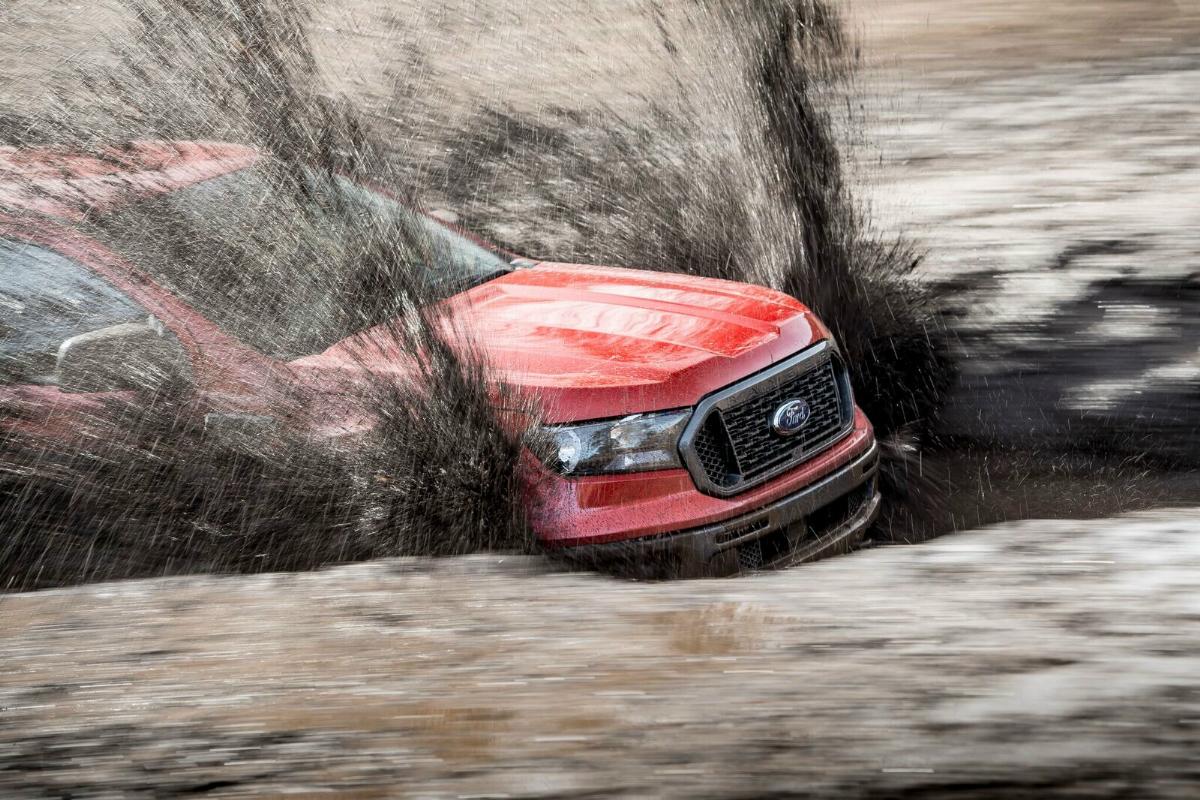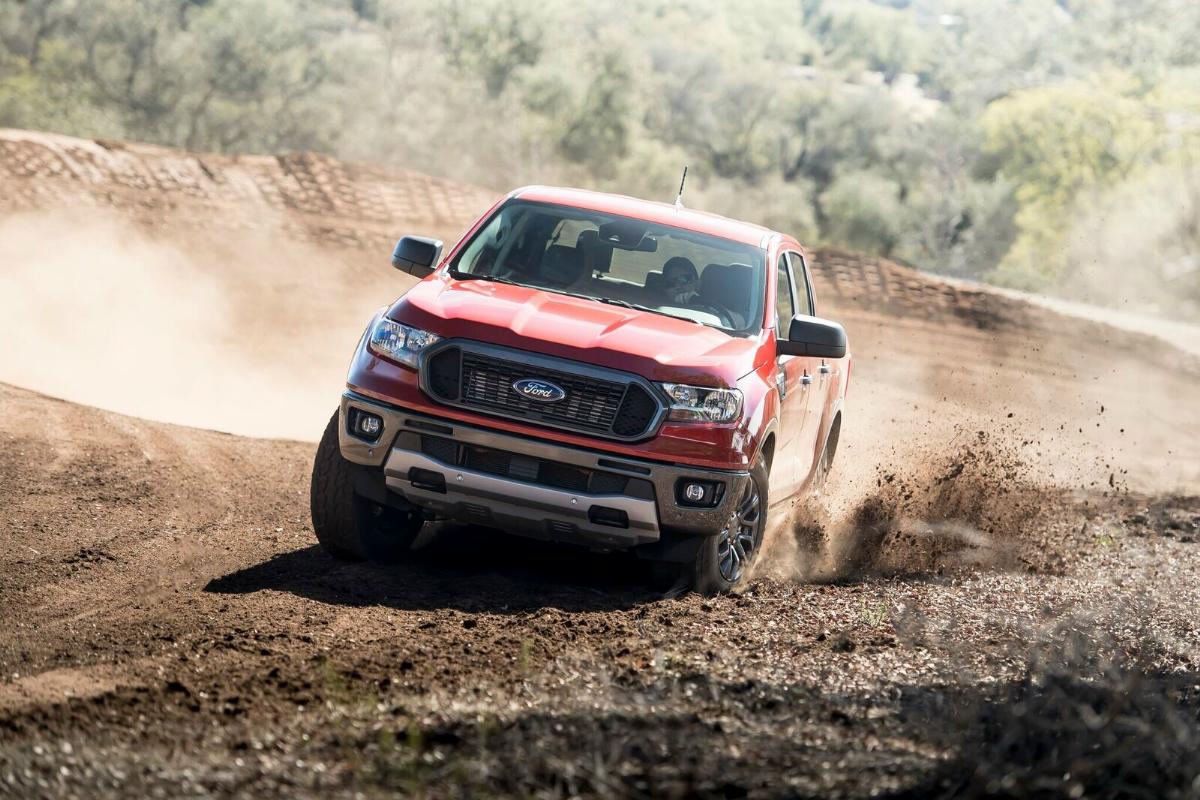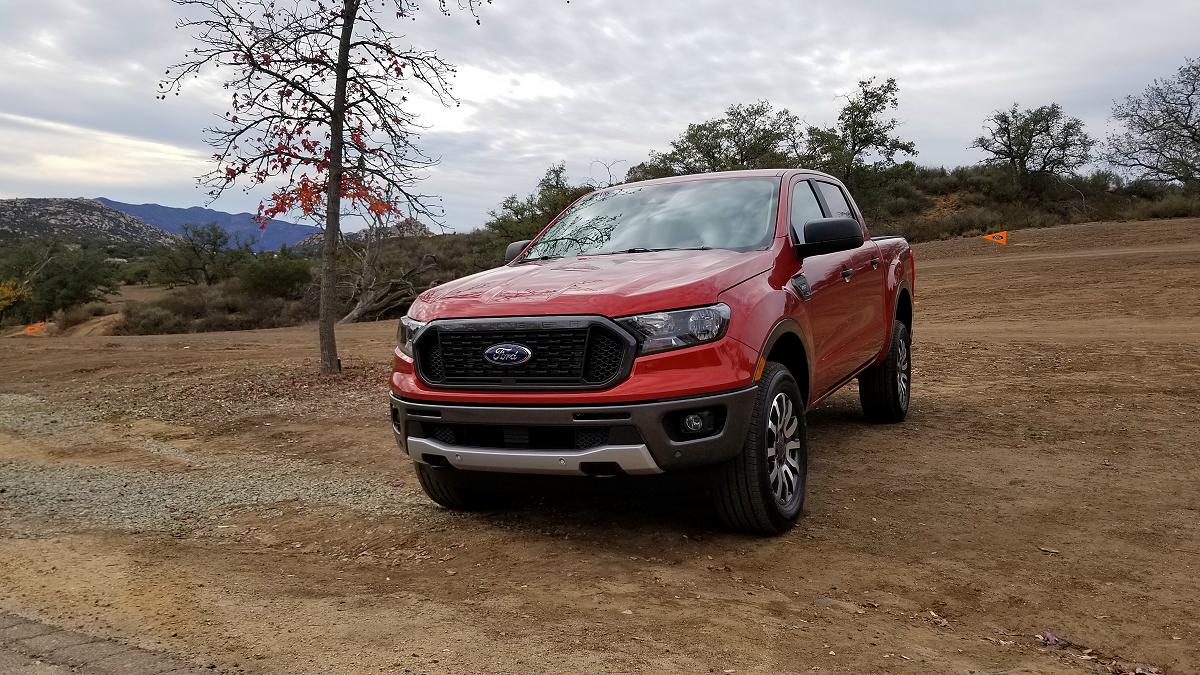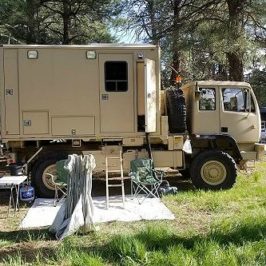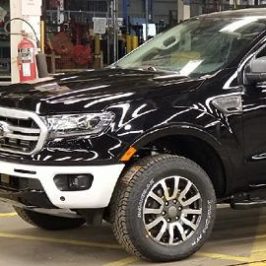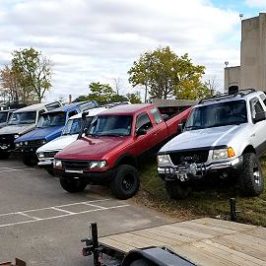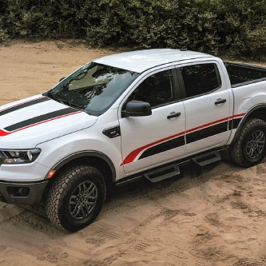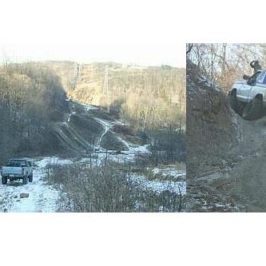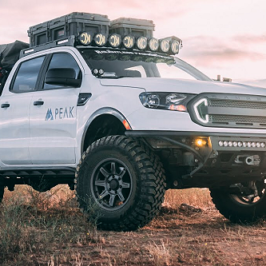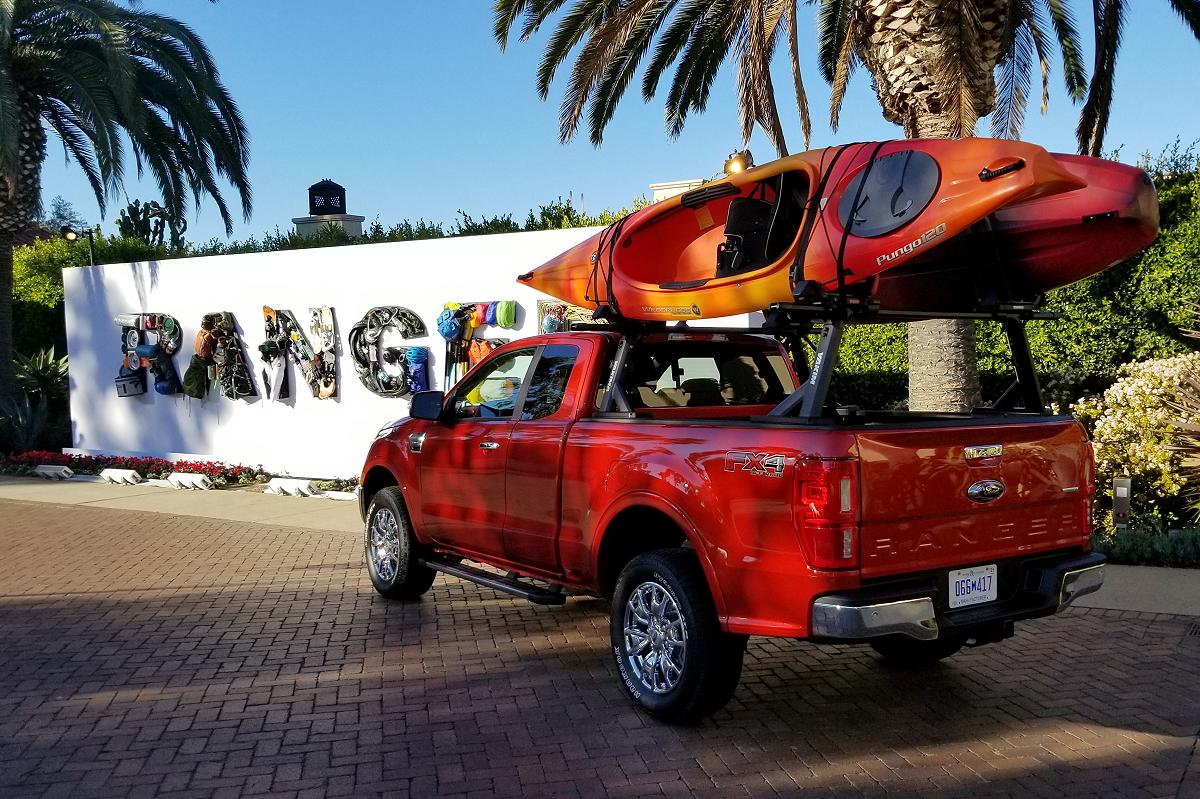
On December 14th, I participated in a ‘Media Drive’ to finally test drive the 2019 Ford Ranger. Due to the number of people attending, and the number of trucks, I shared a Ford Ranger with my friend and automotive writer Steve Turner.
We ended up with a white Supercab Lariat 4×4 with push button start. The Ranger’s navigation was setup with directions to the ranch where we would drive a new Ranger off-road.
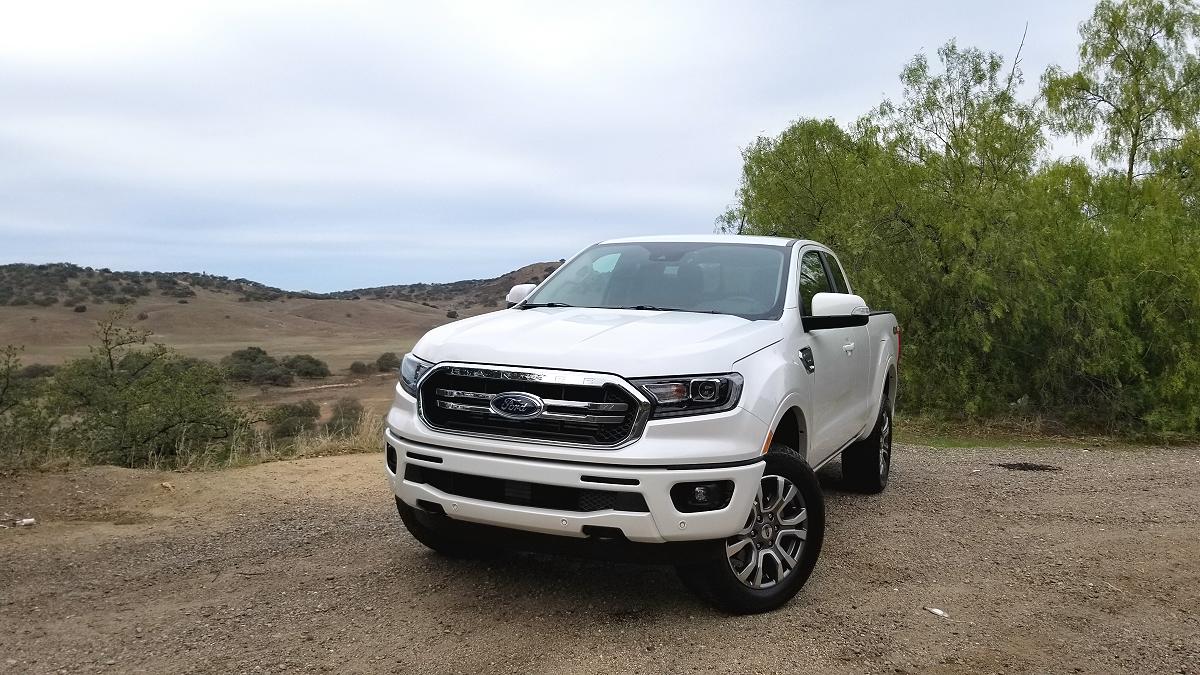
First order of business, the acceleration test. After finally catching a traffic light with nobody in front of us, it was time to see how the truck accelerated from a dead stop. I was actually impressed. The truck is pretty quick off the line thanks to its 270-horsepower 2.3L 4-cylinder engine. This truck is not that much larger than the previous generation Ford Ranger, so you can definitely feel the extra 63 horsepower this truck has over its predecessor. I can see where this could be a fun sport truck to drive.
The drive to the Bradford Ranch outside of Jamul, California took about 1-1/2 hours. The distance from our hotel and the ranch was long enough to give us plenty of time to get a feel for driving the truck in the city, and on the highway. We made a few stops along the way to get some photos and grab a snack.
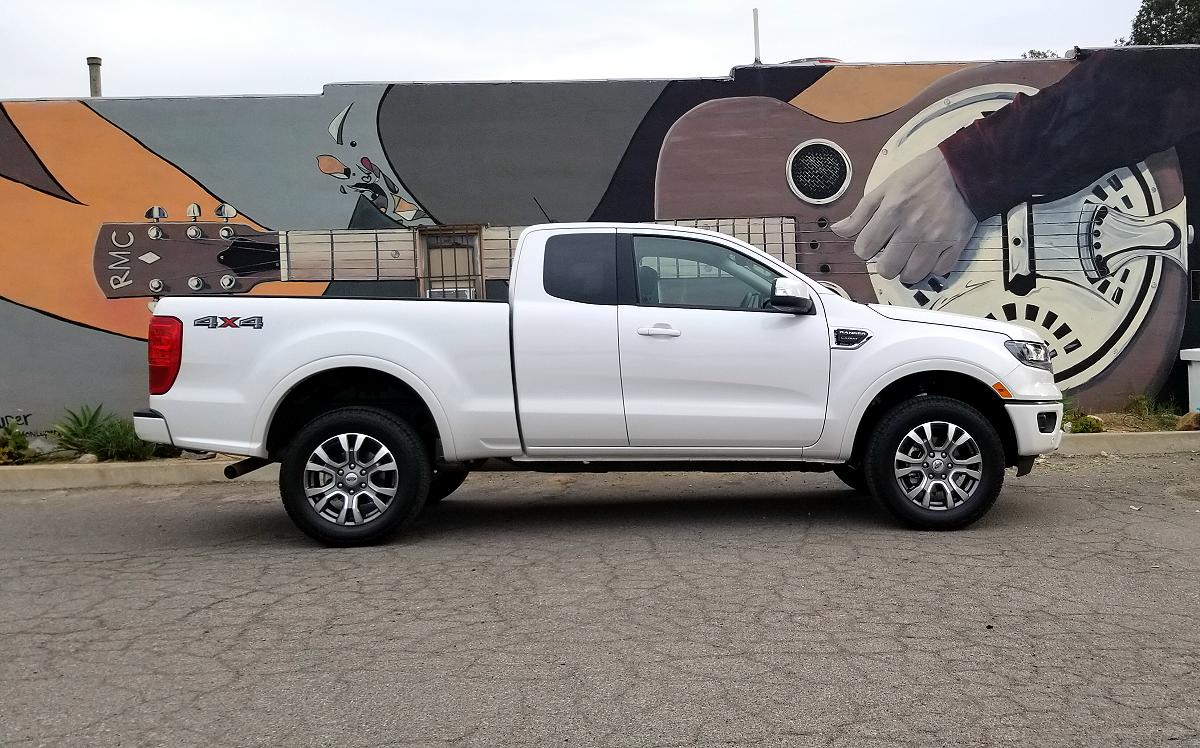
The route we were on had great views and plenty of hills and curves to evaluate how the truck handled. I was happy overall with the ride, performance, and handling of the truck. It was so much fun to drive, that we started getting in to sport car mode, and had to remind ourselves that we were driving a truck.
The only thing I did not like was that I thought the ride felt ‘bouncy’ a few times as we were leaving the La Jolla area. There were a few spots on the road where I thought the Ranger should have rode smoother. It wasn’t harsh though, and I didn’t notice it on the return trip from the ranch.
The interior was comfortable, and I liked the large easy to read navigation display.
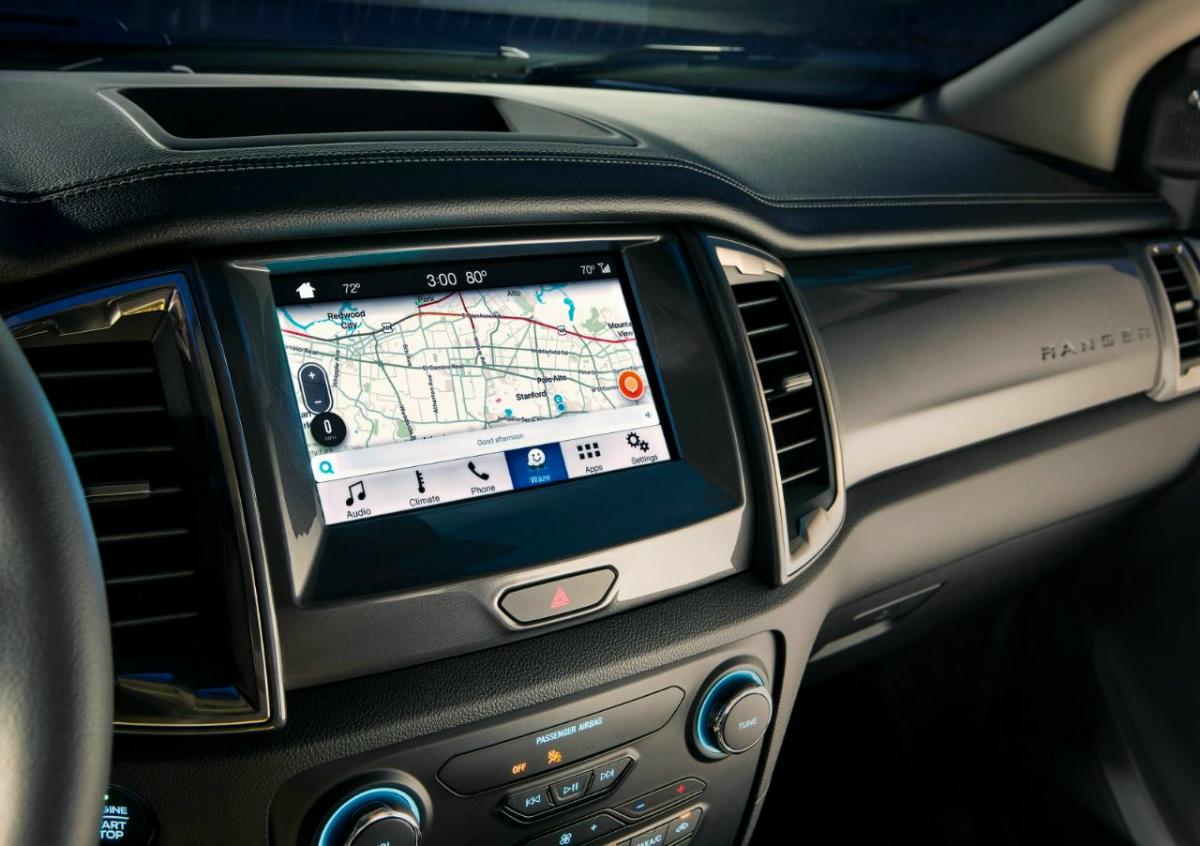
(Ford Photos)
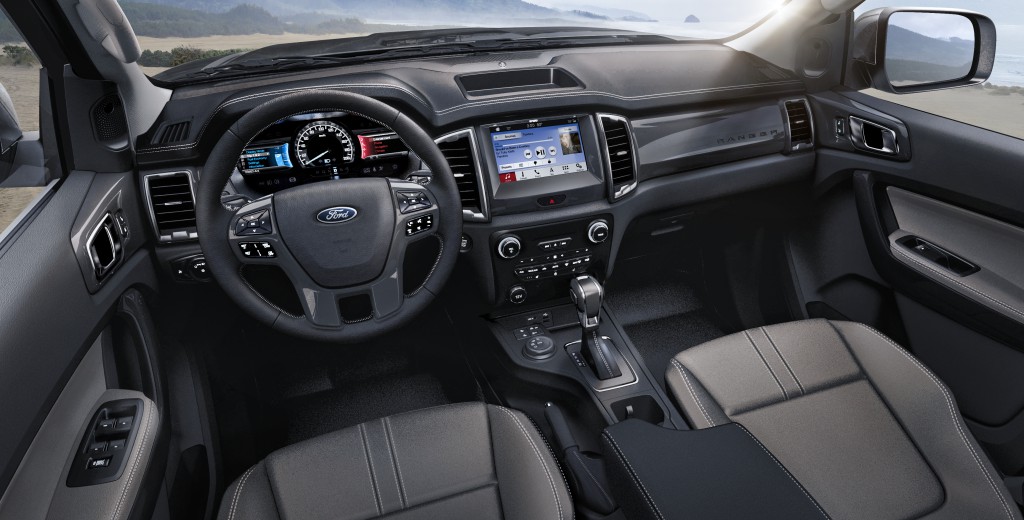
When we arrived at the Bradford Ranch, we parked our Ranger, and used the FX4 Ranger’s that Ford had waiting for us. We were given a demonstration on how to use the Ford Ranger’s Trail Control, and Terrain Management.
My Friend Steve Turner from fordnxt.com took this video of Trail Control Engineer Brandon Cameron explaining the Trail Control and Terrain Management systems to us. I’m driving. There is some good action video at the end.
Afterwards, we had the the opportunity to ride in a Toyota Tacoma, and compare its Crawl Control to the Ford Ranger Trail Control.
I found Toyota’s Crawl Control to be very loud and obnoxious. At first I had wondered if Ford had done something to intensify the noise on the Toyota system. It was a little to dramatic, but they assured me that they had not, and that these were new trucks they had borrowed. I later did a search online, and found that Toyota owners have complained about how noisy the system is. It sounds like someone is running a jack hammer under the truck. If you watch my video, you’ll notice that you can’t hear the Ford system at all.
Finally, we headed to the off-road course. A Ford rep sat in the passenger seat as we went around the course, and again demonstrated the use of the Trail Control and Terrain management.
At this point I was finally on my own. No passengers, and nobody telling me how fast or slow I could go on the course. The off-road course takes about 10-minutes to complete, but you can do it faster and fling some dirt if you wish. I found the new Ranger to be a lot of fun to drive. This isn’t a hardcore course. This is where people will criticize the photos and videos, and swear they could do the course in a Prius. The course was designed to simulate typical trail conditions, and provide you with opportunities to test the Trail Control and Terrain Management. Any experienced offroader would be able to get a feel for the trucks true abilities from this course. You discover what its basic fundamental abilities are, and then recognize the potential.
I actually had the opportunity to go hang gliding or kayaking in the afternoon, but I was having to much fun driving the Ranger, and decided to stay here. By the time I took the photo of Steve in the mud pit below, a lot of the mud and water had been pushed out of it.
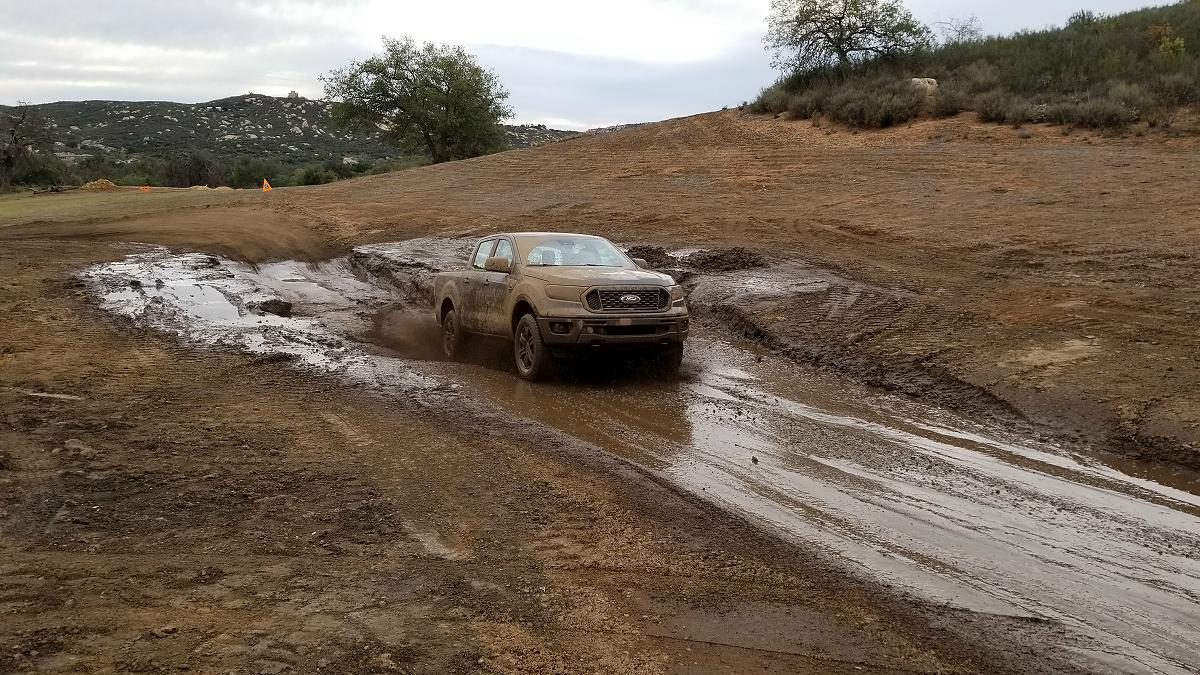
This photo doesn’t show the angle very well, but if you came around this bend to fast, you’d plant the front bumper in to the bank. The Ranger has a respectable 28.7 degree approach angle, and 25.4 degree departure angle. Best of all, there isn’t any plastic on the front of this truck to damage.
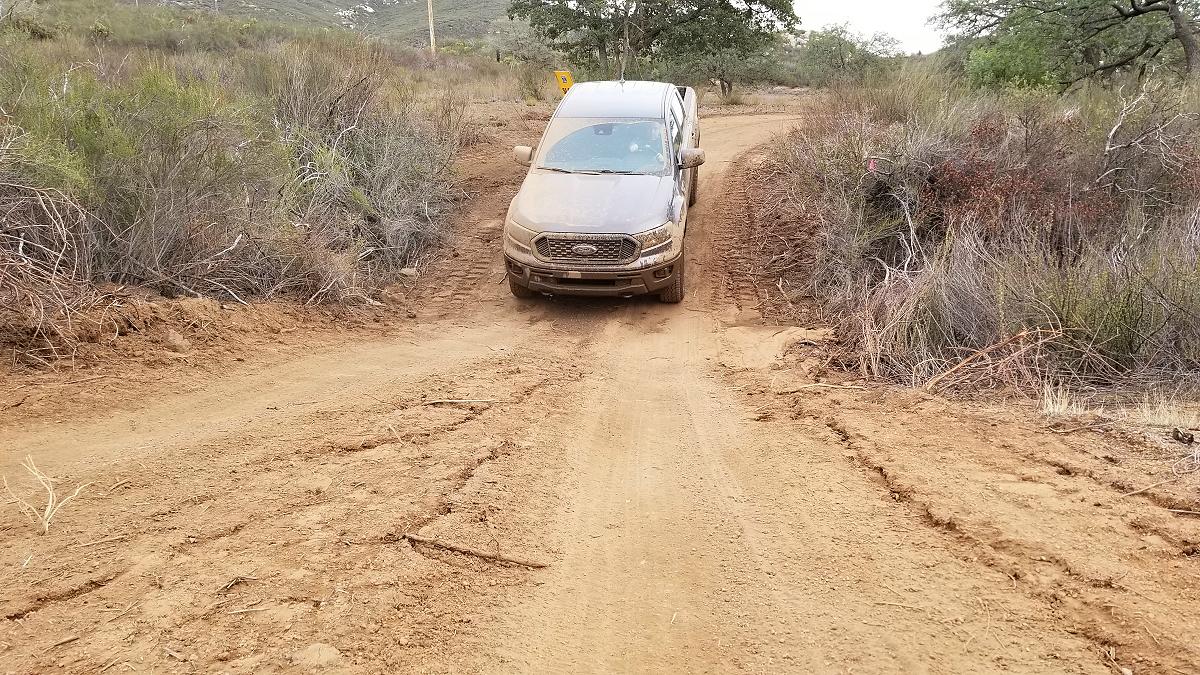
This section of the trail demonstrated the Rangers articulation.
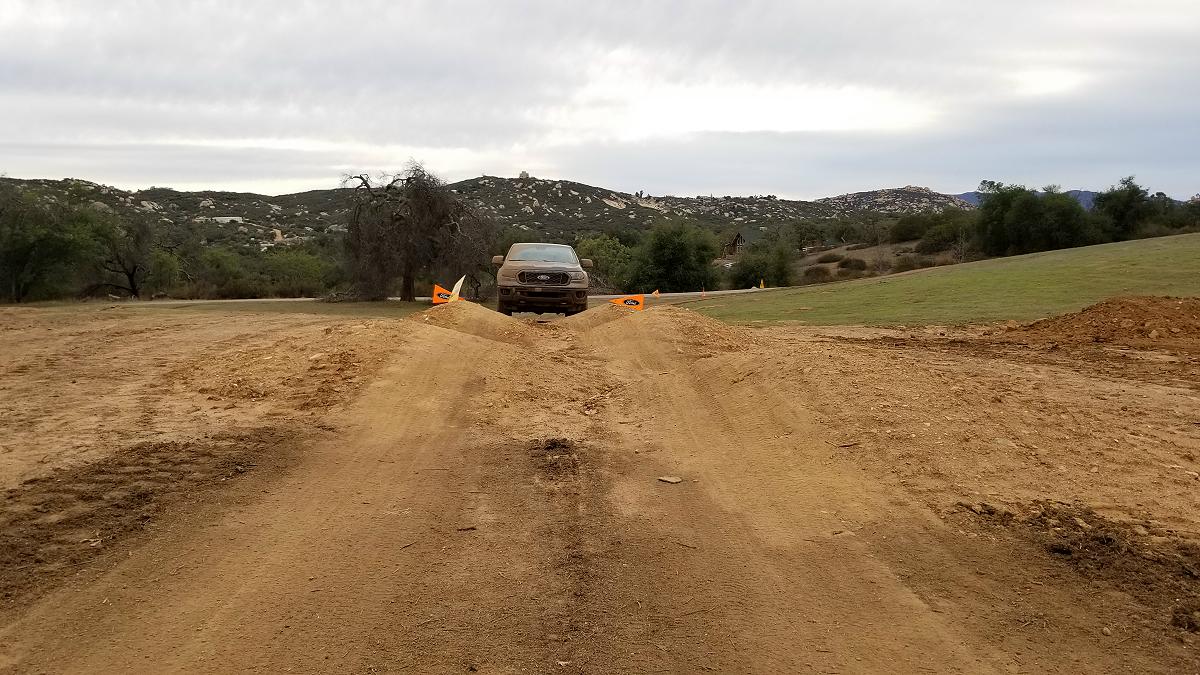
I recorded this video with my cell phone while test driving the 2019 Ford Ranger off-road on December 14, 2018. The video isn’t the best quality, and there isn’t any audio at the beginning. I just wanted people to get a look at the course I was driving on.
This was not intended to be a hardcore trail, but to allow people to see how the truck performs, and test its Trail Control and Terrain Management.
Trail Control:
When I first heard at the debut that the Ranger would have Trail Control, I thought it was a bit ridiculous. I don’t understand why manufactures keep adding more computer controlled features to assist people with driving. Will future generations not have any driving skills at all?
Do I need it? No.
Do I like it? Well, it’s actually pretty cool.
You activate the Trail Control from a button on the console (top left button in the photo below), and then set your desired speed from a switch on the steering wheel. The set speed is displayed on the dash. From there you simply take your foot off of the gas and brake, and the truck will guide itself over the obstacles at the selected speed. You can increase the speed from the steering wheel, or accelerate with the gas pedal, but once you let off of the gas, the truck will drop back down to the speed you have the trail control set at. This works going up or down a hill.
For my use, I could actually see myself using it to descend a steep trail. Especially if I wanted to keep my momentum down, and didn’t want to ride the brake. Once you’ve cleared whatever obstacle you were using it for, simply push the button and continue driving. Unlike cruise control, hitting the brake will not deactivate the Trail Control.
I found the Trail Control to be very smooth. It wasn’t jerky going over obstacles, and the ABS sound was faint and barely noticeable on the descents. It was far superior to the loud and obnoxious Crawl Control used on the Toyota Tacoma.
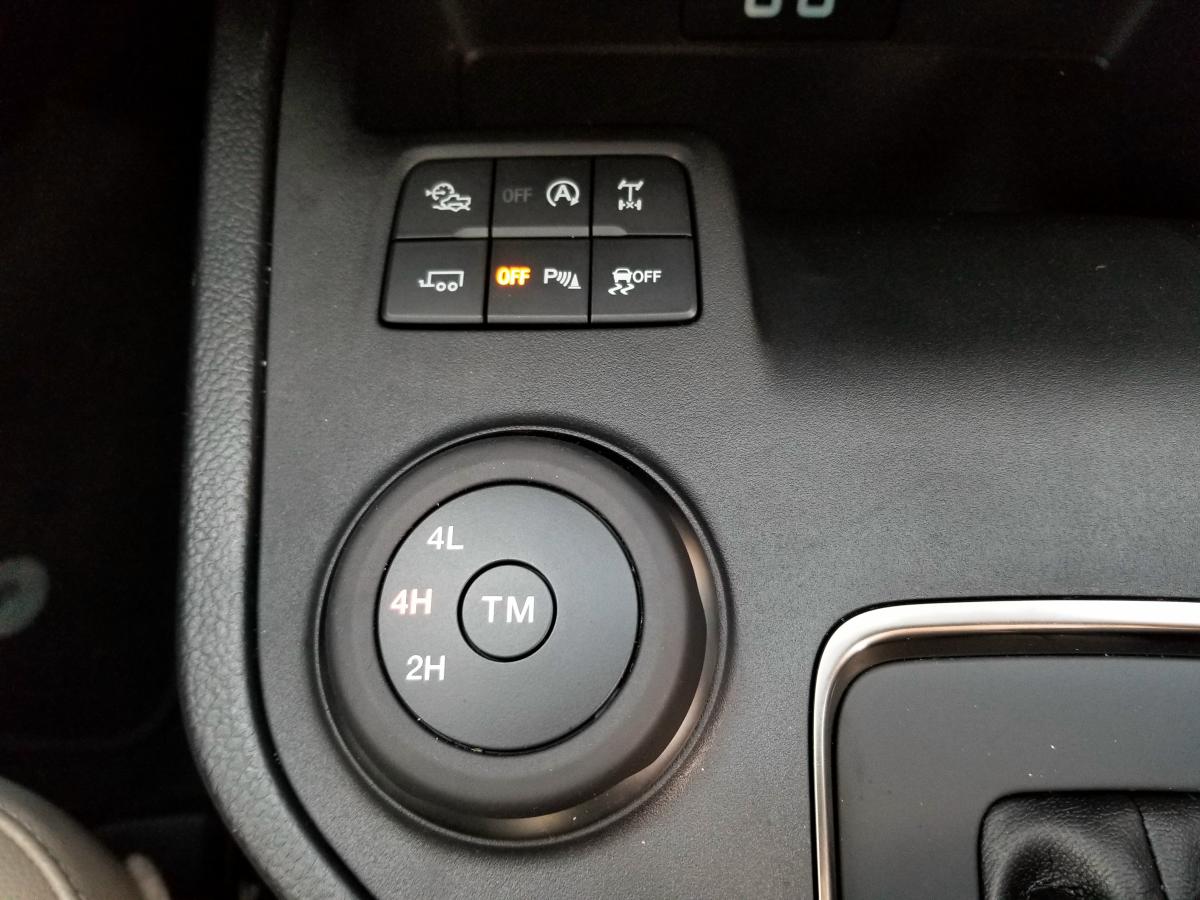
Terrain Management:
The Terrain Management System is activated by the ‘TM’ button in the middle of the 4WD knob. The Terrain Management gives drivers more off-road control by automatically changing calibrations in the engine and transmission with the push of a button.
These settings are:
- Mud/Ruts – switches the throttle to a more aggressive mode, limits upshifting and desensitizes stability control, allowing the tires to spin as needed.
- Sand – the throttle throws maximum torque to the wheels, placing the transmission in lower gears for as long as possible, which allows the wheels to spin aggressively.
- Grass/Gravel/Snow – places the throttle in a setting to minimize wheelslip
I used this in the Mud/Ruts mode to get some more wheel spin going through the mud pit.
Tire Sizes:
The 2019 Ford Ranger comes with Hancook Dynapro tires.
Tire sizes for the 2019 Ford Ranger are:
- 255/70R16 (30.1 x 10 x 16) – standard
- 255/65R17 (30.1 x 10 x 17) – optional
- 265/65R17 (30.6 x 10.4 x 17) – optional
- 265/60R18 (30.5 x 10.4 x 18) – optional
I think you could add a mild lift, 33-inch tires, and still having plenty of power and torque from the 2.3L to turn them.
Ranger VS Tacoma Observation:
I already mentioned how the Toyota’s Crawl Control was so much louder and obnoxious than Ford’s Trail Control. Looking under both trucks, I noticed that nothing hangs below the frame on the 2019 Ford Ranger 4×4.
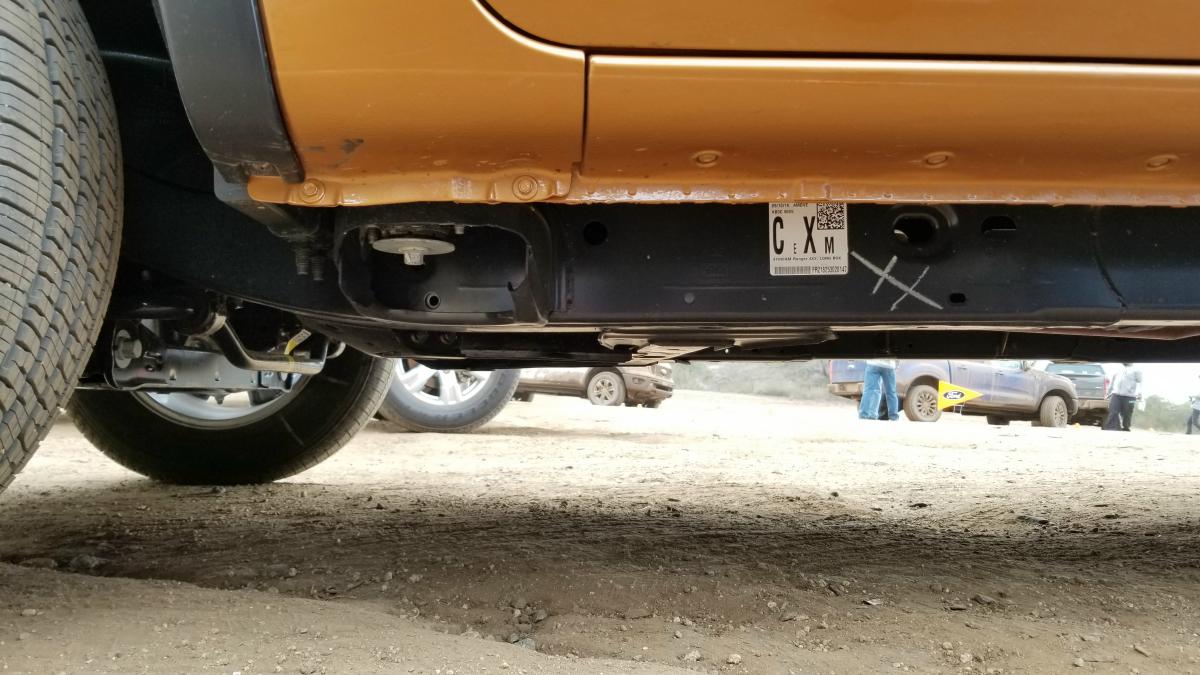
But when you look under the Toyota Tacoma, you can see what appears to be the transfer case and an exhaust pipe hanging below the frame rail.
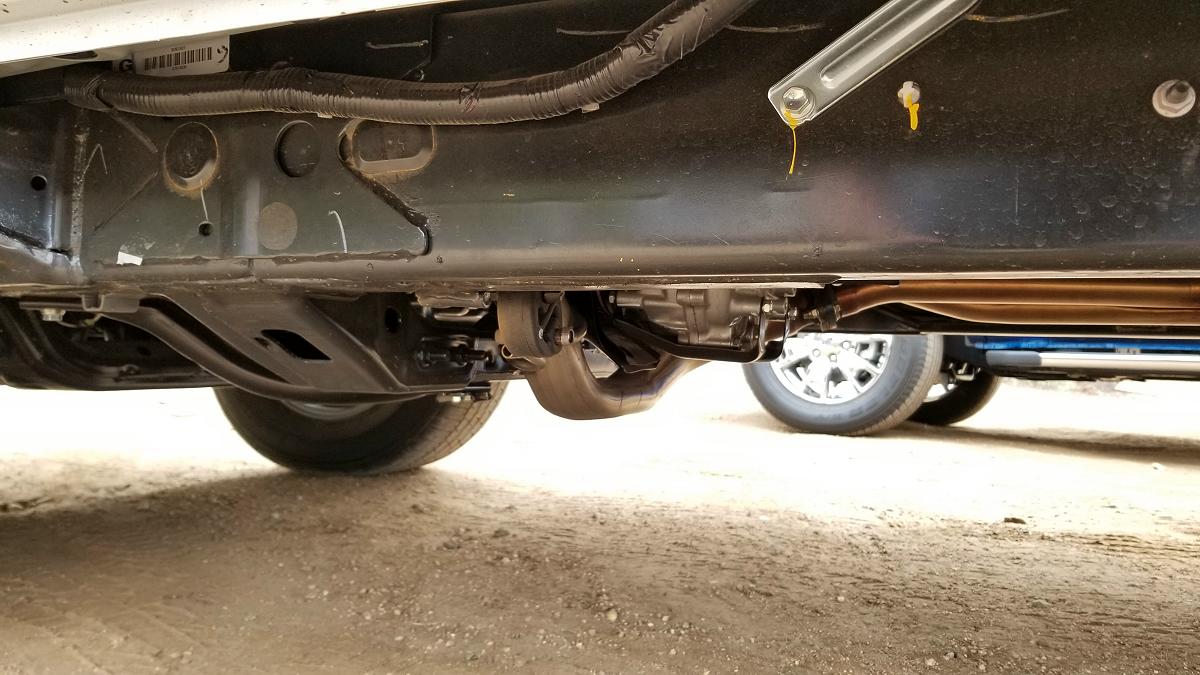
Adventure Truck:
Having driven the Ranger around the course several times (I think I was the last one off of the course), I could see the potential the Ranger had as an adventure vehicle. Even in it’s stock form, I think it would make a great trail truck / off-road truck. It would also be an ideal truck for someone that wanted a comfortable vehicle to drive during the week, that could still haul their dirt bikes, ATV, or personal watercraft on the weekends.
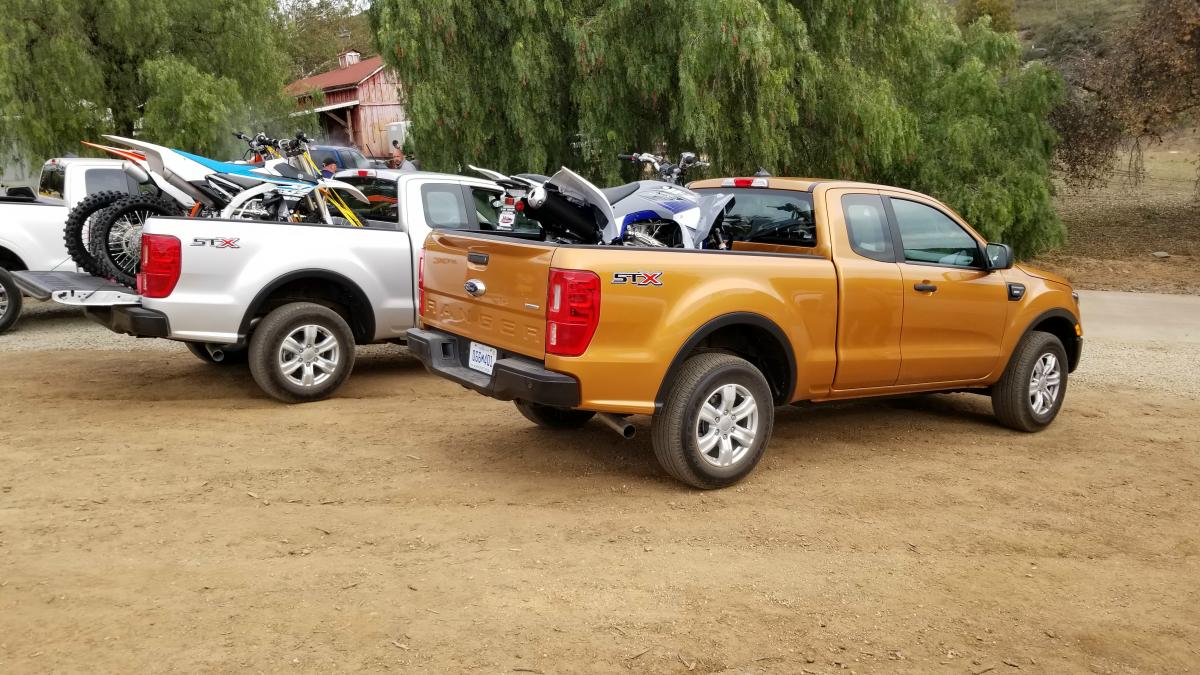
Yakima Racks & Tents:
You’ve likely heard that Ford has partnered with Yakima to provide bed racks to help you carry anything from kayaks to tents. What’s really cool is that when you purchase your new Ford Ranger, you can actually purchase the racks and a tent right from your dealer, and get it all financed as one truck payment. Ford is making it so that you can go in to your local dealer, and purchase a turn key adventure vehicle.
I had the chance to climb in to the tent. I’m 6’2″, and I had plenty of room to lay in it. I believe this is Yakima’s Small Skyrise Tent, and according to the Yakima site, measures 48″ x 84″ x 42″. It has plenty of room for (2) people.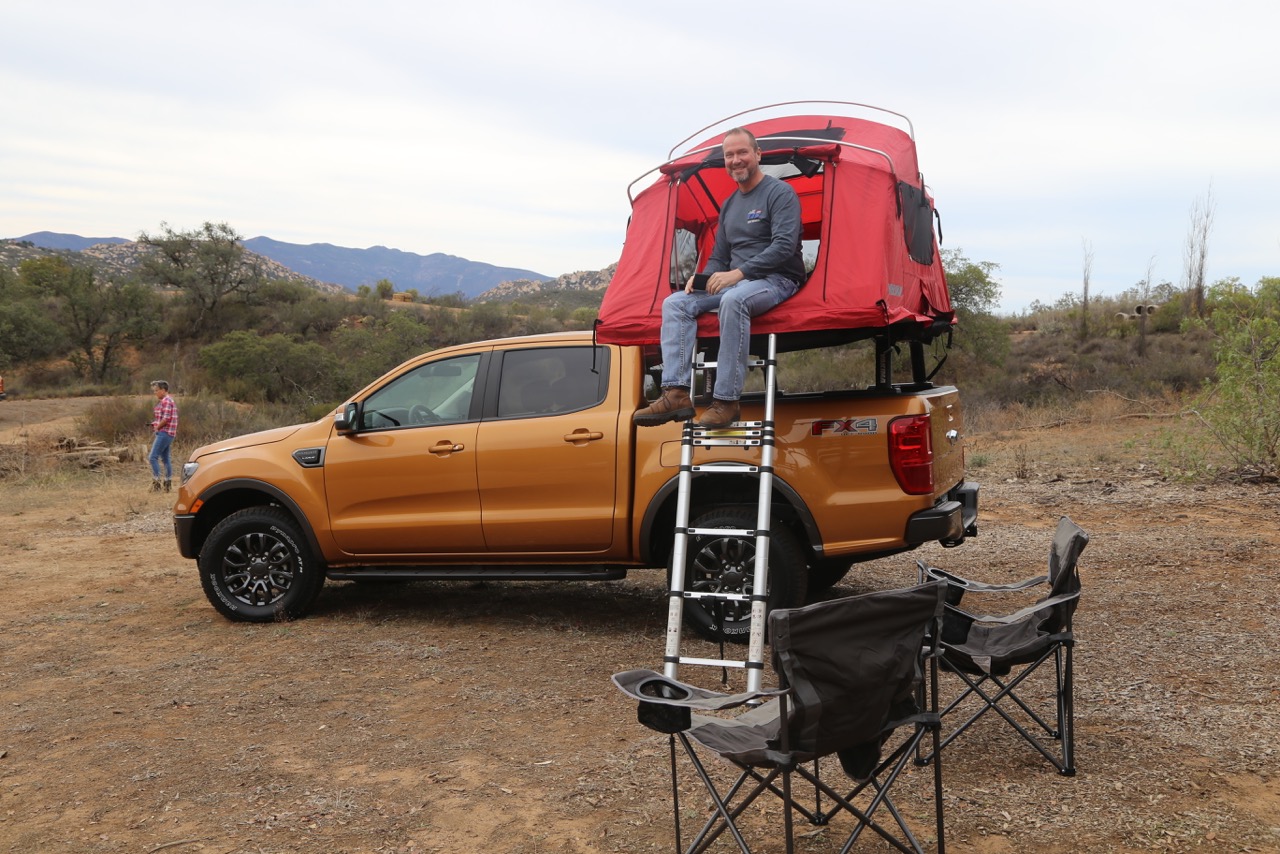
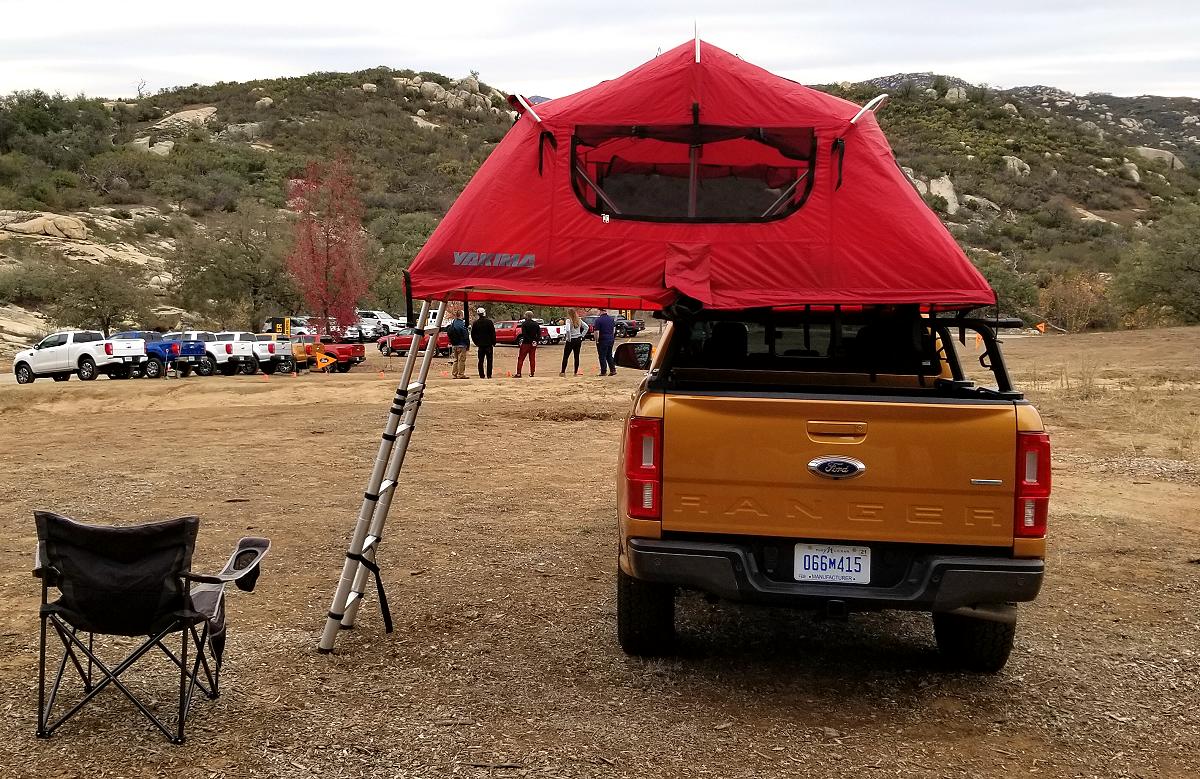
The bed racks that Yakima builds are very sturdy and well constructed.
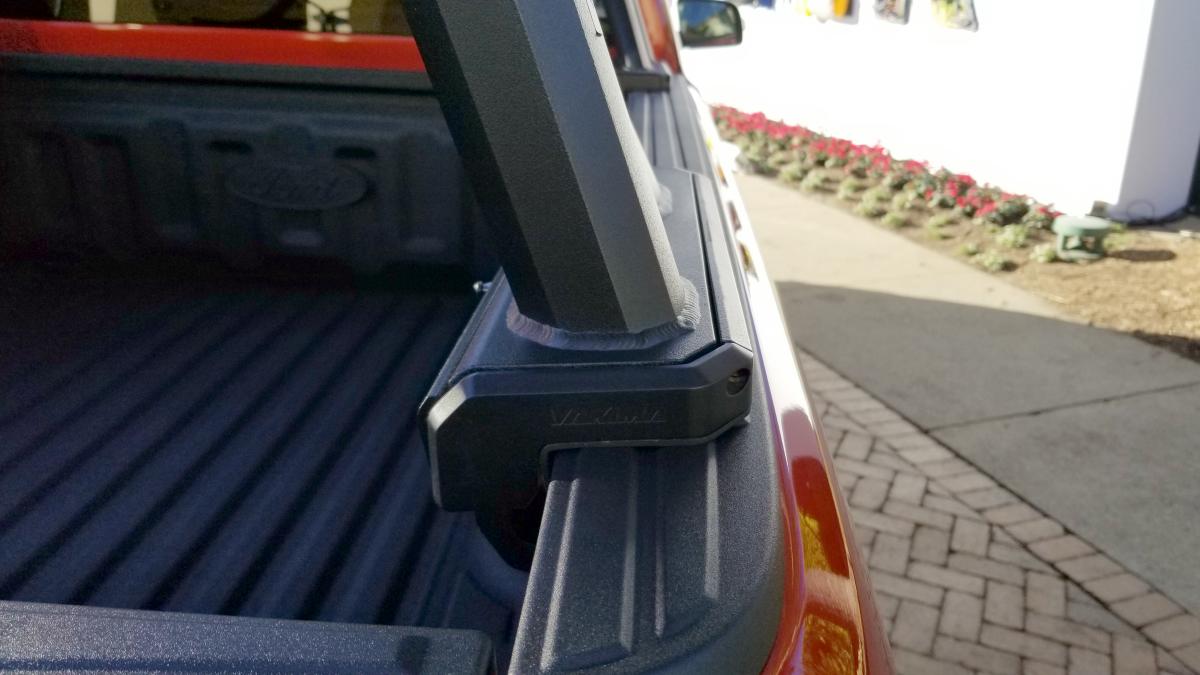
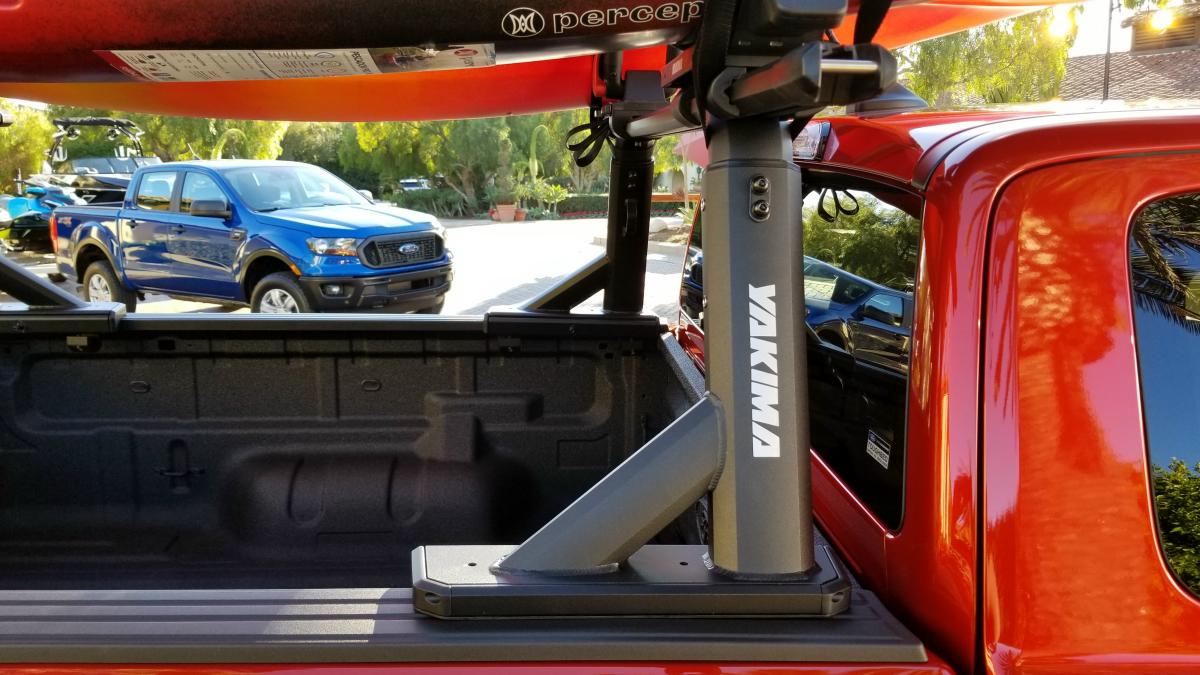
Overall Impression:
I love this truck. I like the look of it, the interior, the amount of power the engine produces, and the fact that it comes with an optional electric locker. I also love that I can purchase one with the Yakima rack and tent, and have it all financed in one payment. I can’t think of anything I would change about the truck.
If I could get Ford to add anything, it would be to incorporate upfitter switches like they use on the Super Duty. If I bought a Ranger and was setting it up to meet my needs, I would be disappointed because it doesn’t have any upfitter switches to wire some auxiliary lighting to. I keep bugging Ford to make these available. They have been available on the Super Duty for many years.
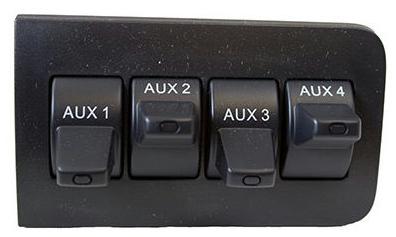
Other than that, this is by far the best Ranger Ford has ever produced. I know some people complain about the way it looks. They think it looks to much like the competition. It really doesn’t. I’ve yet to hear anyone complain about it that has actually seen it in person. The previous Ford Ranger was unchanged for way to long. Then there was a 7-year gap between the last Ranger, and the debut of the 2019 Ford Ranger. If the Ranger had stayed in production, and Ford had kept it updated, the new Ranger wouldn’t be such a dramatic change for people to adjust to. But the 2019 Ford Ranger is finally where it should be, and it’s pretty damn nice.
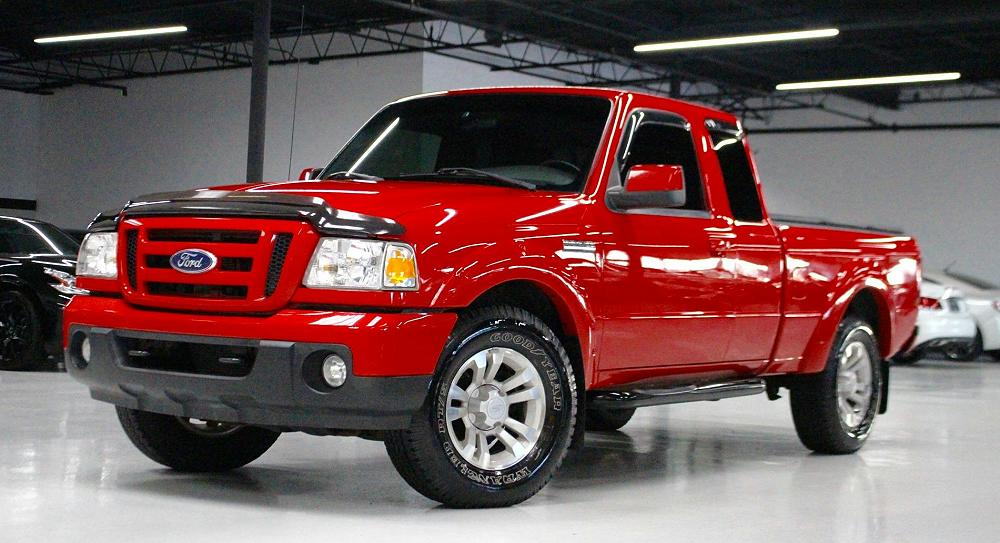
(2011 Ford Ranger)
For all of you that will complain about the lack of a manual transmission, or other engine options, you need to remember that Ford invested $850 million in to the Michigan Assembly plant to bring this truck back to North America. I personally think you will see more options with this truck when Ford starts seeing profits from their investment.
Pricing:
- 4×2 SuperCab starts at $25,395
- 4×2 SuperCrew starts at $27,615
- 4×4 SuperCab starts at $29,555
- 4×4 SuperCrew starts at $31,775
These are the Manufacturers Suggested Retail Price (MSRP). I know over the years I’ve seen dealers with sales prices below MSRP, so it will be interesting to see what types of deals will be out there.
Links:
2019 Ford Ranger Specifications
Introduction: 2019 Ford Ranger
More Photos:
Click the photos to enlarge – click the arrows to load more.

